|
|
This article will show you how to download a Tuscany distribution,
add the distribution as a user library in Eclipse, create the Store
sample as a Java project, and then run the Store and use it from a web
browser.
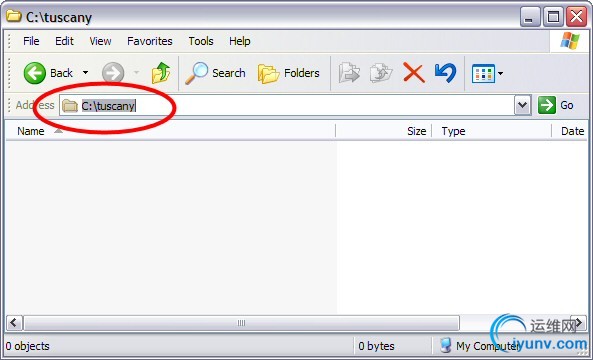
| Although
this guide show some images based on the Java SCA 1.3.2 release, you
should be able to use latest Java SCA release while going to the
necessary steps for this guide. |

"Get Started with Store Demo in Eclipse video"
Install the Tuscany Distribution
The first thing you do is to create a file system folder into which you will download the TUSCANY distribution.

Next you download the latest release distribution. Launch your browser and enter the following URL.
Latest Release - http://cwiki.apache.org/TUSCANY/sca-java-releases.html
Download both the bin zip
as well as the src zip
to the folder that you created on your disk. Once you completed the download you should see the following on your disk.
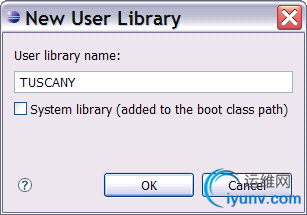
Next you unzip the bin zip
in place, you should see the following folder file structure on your disk after unzip is complete.

Setup Eclipse for Tuscany
Start Eclipse and create a User Library to contain the TUSCANY runtime jar's as well as their
depending jar's.
From the menu bar select Window
and then Preferences...
. The Preferences dialog will appear,
in its left navigation tree select Java
, followed by Build Path
, and followed by User Libraries
.
Select the New...
pushbutton on the right of the New Libraries dialog to create a new user library.

The user library created is empty, select the Add JARs...
pushbutton on the right to add all the
jar's from your Tuscany installation lib folder
. When completed all the jar's will appear under the
TUSCANY user library.

Since some of you maybe interested in debugging
also the Tuscany runtime code we will attach
the Tuscany source to the Tuscany runtime jar in the following step. In the User Libraies dialog
scroll down until you see the Tuscany runtime jar
and select its Source attachment.

Select the Edit...
pushbutton on the right and in the Edit dialog use the External File...
pushbutton
to the select the Tuscany src zip
that we downloaded earlier.

Select OK
to complete this and the Preferences dialog, and you are done with the Tuscany setup
for Eclipse.
Create your 1st Composite Service Application
The following shows the composition diagram for the composite service application you are about
to create.

The composite service application you will create is a composition of four services. The composed
service provided is that of an on-line store.
There is a Catalog service which you can ask for catalog items, and depending on its currency
code property configuration it will provide the item prices in USD or EUR. The Catalog service is not
doing the currency conversion itself it references a CurrencyConverter service to do that task. Then
there is the ShoppingCart service into which items chosen from the catalog can be added, it is
implemented as a REST service. The Catalog is bound using the JSONRPC binding, and the
ShoppingCart service is bound using the ATOM binding. Finally there is the Store user facing
service that provides the browser based user interface of the store. The Store service makes use of
the Catalog and ShoppingCart service using the JSONRPC, and ATOM binding respectively.
Create a Java Project
In this step you create a Java Project in Eclipse to hold the composite service application.
Click on the New Java Project
button

in the toolbar to launch the project creation dialog.
Next you enter "store" as the Project name
, and for Project Layout
select Create separate
folders for sources and class files.


Hit the Next
button, and on the following page go to the Libraries
tab. Use the Add Library...
button on the right to add the TUSCANY user library to the project.

Hit the Finish
button to complete the New Java Project
dialog to create the "store" java project.

Construct Services
First you create two package folders into which later in this step you place service implementations.
Select the "store" project and click on the New Java Package
button

in the toolbar to launch
the package creation dialog.
Next you enter "services" as the package Name
, and press the Finish
button to complete the
dialog.

Repeat the previous step to create another package named "ufservices". The store project now
should look as follows.

In the following you will place in the "services" package the regular services, and in the "ufservices"
package the user facing services of the composite service application you create.
Catalog
In this step you create the Catalog service interface and implementation.
Select the "services" package. Next you click on the dropdown arrow next to the New Java Class
button

and select the New Java Interface
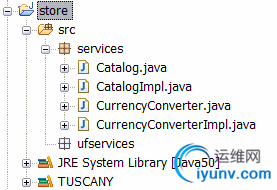
option from the dropdown list. In the dialog
enter "Catalog" as the Name
of the interface and select the Finish button to complete the dialog.
The Java editor will open on the new created Java interface. Replace the content of the editor by
copy-paste
of the following Java interface code snippet.
package
services;
import
org.osoa.sca.annotations.Remotable;
@Remotable
public
interface
Catalog {
Item[] get();
}
Select the "services" package again. Select the New Java Class
button
. In the dialog enter
"CatalogImpl" as the Name
of the class, add "Catalog" as the interface this class implements, and
then select Finish
to complete the dialog.
The Java editor will open on the new created Java class. Replace the content of the editor by
copy-paste
of the following Java class code snippet.
package
services;
import
java.util.ArrayList;
import
java.util.List;
import
org.osoa.sca.annotations.Init;
import
org.osoa.sca.annotations.Property;
import
org.osoa.sca.annotations.Reference;
public
class CatalogImpl implements
Catalog {
@Property
public
String
currencyCode = "USD"
;
@Reference
public
CurrencyConverter currencyConverter;
private
List<Item> catalog = new
ArrayList<Item>();
@Init
public
void init() {
String
currencySymbol = currencyConverter
.getCurrencySymbol(currencyCode);
catalog.add(new
Item("Apple"
, currencySymbol
+ currencyConverter.getConversion("USD"
, currencyCode, 2.99)));
catalog.add(new
Item("Orange"
, currencySymbol
+ currencyConverter.getConversion("USD"
, currencyCode, 3.55)));
catalog.add(new
Item("Pear"
, currencySymbol
+ currencyConverter.getConversion("USD"
, currencyCode, 1.55)));
}
public
Item[] get() {
Item[] catalogArray = new
Item[catalog.size()];
catalog.toArray(catalogArray);
return
catalogArray;
}
}
After completing these steps the content of the "store" project will look as follows.

Note:
CatalogImpl is red x'ed because it makes use of the CurrencyConverter interface that we
have not implemented yet.
CurrencyConverter
In this step you create the CurrencyConverter service interface and implementation.
You follow the same steps that you learned previously to create the interface and implementation.
First create a Java interface in the "services" package named "CurrencyConverter" and copy-paste
the following Java interface code snippet into it.
package
services;
import
org.osoa.sca.annotations.Remotable;
@Remotable
public
interface
CurrencyConverter {
public
double
getConversion(String
fromCurrenycCode, String
toCurrencyCode, double
amount);
public
String
getCurrencySymbol(String
currencyCode);
}
Next create a Java class in the "services" package named "CurrencyConverterImpl" and copy-paste
the following Java class code snippet into it.
package
services;
public
class CurrencyConverterImpl implements
CurrencyConverter {
public
double
getConversion(String
fromCurrencyCode, String
toCurrencyCode, double
amount) {
if
(toCurrencyCode.equals("USD"
))
return
amount;
else
if
(toCurrencyCode.equals("EUR"
))
return
((double
)Math
.round(amount * 0.7256 * 100)) /100;
return
0;
}
public
String
getCurrencySymbol(String
currencyCode) {
if
(currencyCode.equals("USD"
))
return
"$"
;
else
if
(currencyCode.equals("EUR"
))
return
"E"
; //"€"
;
return
"?"
;
}
}
After completing these steps the content of the "store" project will look as follows.

ShoppingCart
In this step you create the Item model object, the Cart and Total
service interfaces and the ShoppingCart service implementation.
You follow the same steps that you learned previously to create the interface and implementation.
Create a Java class in the "services" package named "Item" and copy-paste
the
following code snippet into it.
package
services;
public
class Item {
private
String
name;
private
String
price;
public
Item() {
}
public
Item(String
name, String
price) {
this
.name = name;
this
.price = price;
}
public
String
getName() {
return
name;
}
public
void setName(String
name) {
this
.name = name;
}
public
String
getPrice() {
return
price;
}
public
void setPrice(String
price) {
this
.price = price;
}
}
Create a Java interface in the "services" package named "Cart" and copy-paste
the
following code snippet into it.
package
services;
import
org.apache.tuscany.sca.data.collection.Collection;
import
org.osoa.sca.annotations.Remotable;
@Remotable
public
interface
Cart extends
Collection<String
, Item> {
}
Create a Java interface in the "services" package named "Total" and copy-paste
the
following code snippet into it.
package
services;
import
org.osoa.sca.annotations.Remotable;
@Remotable
public
interface
Total {
String
getTotal();
}
Create a Java class in the "services" package named "ShoppingCartImpl" and copy-paste
the
following Java class code snippet into it.
package
services;
import
java.util.ArrayList;
import
java.util.HashMap;
import
java.util.List;
import
java.util.Map;
import
java.util.UUID;
import
org.apache.tuscany.sca.data.collection.Entry;
import
org.apache.tuscany.sca.data.collection.NotFoundException;
import
org.osoa.sca.annotations.Init;
import
org.osoa.sca.annotations.Scope;
@Scope("COMPOSITE"
)
public
class ShoppingCartImpl implements
Cart, Total {
private
Map<String
, Item> cart;
@Init
public
void init() {
cart = new
HashMap<String
, Item>();
}
public
Entry<String
, Item>[] getAll() {
Entry<String
, Item>[] entries = new
Entry[cart.size()];
int
i = 0;
for
(Map.Entry<String
, Item> e : cart.entrySet()) {
entries[i++] = new
Entry<String
, Item>(e.getKey(), e.getValue());
}
return
entries;
}
public
Item get(String
key) throws
NotFoundException {
Item item = cart.get(key);
if
(item == null
) {
throw
new
NotFoundException(key);
} else
{
return
item;
}
}
public
String
post(String
key, Item item) {
if
(key == null
) {
key = "cart-"
+ UUID.randomUUID().toString();
}
cart.put(key, item);
return
key;
}
public
void put(String
key, Item item) throws
NotFoundException {
if
(!cart.containsKey(key)) {
throw
new
NotFoundException(key);
}
cart.put(key, item);
}
public
void delete(String
key) throws
NotFoundException {
if
(key == null
|| key.equals("")) {
cart.clear();
} else
{
Item item = cart.remove(key);
if
(item == null
)
throw
new
NotFoundException(key);
}
}
public
Entry<String
, Item>[] query(String
queryString) {
List<Entry<String
, Item>> entries = new
ArrayList<Entry<String
, Item>>();
if
(queryString.startsWith("name="
)) {
String
name = queryString.substring(5);
for
(Map.Entry<String
, Item> e : cart.entrySet()) {
Item item = e.getValue();
if
(item.getName().equals(name)) {
entries.add(new
Entry<String
, Item>(e.getKey(), e
.getValue()));
}
}
}
return
entries.toArray(new
Entry[entries.size()]);
}
public
String
getTotal() {
double
total = 0;
String
currencySymbol = "";
if
(!cart.isEmpty()) {
Item item = cart.values().iterator().next();
currencySymbol = item.getPrice().substring(0, 1);
}
for
(Item item : cart.values()) {
total += Double
.valueOf(item.getPrice().substring(1));
}
return
currencySymbol + String
.valueOf(total);
}
}
Note:
Since the Tuscany conversational support is not ready yet the cart is realized through a hack.
The cart field is defined as static.
After completing these steps the content of the "store" project will look as follows.

Store
In this step you create the user facing Store service that will run in a Web browser and provide the
user interface to the other services you created.
Select the "ufservices" package. Right click
to get the context menu, select New
, and then File
. In
the New File
dialog enter "store.html" for the File name
, and then select Finish
to complete the
dialog.
The Text editor will open on the new created html file. Replace the content of the editor by copy-paste
of the following html snippet.
<html>
<head>
<title>Store</title>
<script type="text/javascript"
src="store.js"
></script>
<script language="JavaScript"
>
//@Reference
var
catalog = new
tuscany.sca.Reference("catalog"
);
//@Reference
var
shoppingCart = new
tuscany.sca.Reference("shoppingCart"
);
//@Reference
var
shoppingTotal = new
tuscany.sca.Reference("shoppingTotal"
);
var
catalogItems;
function catalog_getResponse(items) {
var
catalog = "";
for
(var
i=0; i<items.length; i++) {
var
item = items.name + ' - ' + items.price;
catalog += '<input name="items"
type="checkbox"
value="' +
item + '">' + item + ' <br>';
}
document.getElementById('catalog').innerHTML=catalog;
catalogItems = items;
}
function shoppingCart_getResponse(feed) {
if
(feed != null
) {
var
entries = feed.getElementsByTagName("entry"
);
var
list = "";
for
(var
i=0; i<entries.length; i++) {
var
content = entries.getElementsByTagName("content"
)[0];
var
name = content.getElementsByTagName("name"
)[0].firstChild.nodeValue;
var
price = content.getElementsByTagName("price"
)[0].firstChild.nodeValue;
list += name + ' - ' + price + ' <br>';
}
document.getElementById("shoppingCart"
).innerHTML = list;
if
(entries.length != 0) {
shoppingTotal.getTotal(shoppingTotal_getTotalResponse);
}
}
}
function shoppingTotal_getTotalResponse(total) {
document.getElementById('total').innerHTML = total;
}
function shoppingCart_postResponse(entry) {
shoppingCart.get("", shoppingCart_getResponse);
}
function addToCart() {
var
items = document.catalogForm.items;
var
j = 0;
for
(var
i=0; i<items.length; i++)
if
(items.checked) {
var
entry = '<entry xmlns="http://www.w3.org/2005/Atom"
><title>item</title><content type="text/xml"
>' +
'<Item xmlns="http://services/"
>' +
'<name xmlns="">' + catalogItems.name + '</name>' + '<price xmlns="
">' + catalogItems.price + '</price>' +
'</Item>' + '</content></entry>';
shoppingCart.post(entry, shoppingCart_postResponse);
items.checked = false
;
}
}
function checkoutCart() {
document.getElementById('store').innerHTML='<h2>' +
'Thanks for
Shopping With Us!</h2>'+
'<h2>Your Order</h2>'+
'<form name="orderForm"
>'+
document.getElementById('shoppingCart').innerHTML+
'<br>'+
document.getElementById('total').innerHTML+
'<br>'+
'<br>'+
'<input type="submit"
value="Continue Shopping"
>'+
'</form>';
shoppingCart.del("", null
);
}
function deleteCart() {
shoppingCart.del("", null
);
document.getElementById('shoppingCart').innerHTML = "";
document.getElementById('total').innerHTML = "";
}
function init() {
catalog.get(catalog_getResponse);
shoppingCart.get("", shoppingCart_getResponse);
}
</script>
</head>
<body onload="init()"
>
<h1>Store</h1>
<div id="store"
>
<h2>Catalog</h2>
<form name="catalogForm"
>
<div id="catalog"
></div>
<br>
<input type="button"
onClick="addToCart()"
value="Add to Cart"
>
</form>
<br>
<h2>Your Shopping Cart</h2>
<form name="shoppingCartForm"
>
<div id="shoppingCart"
></div>
<br>
<div id="total"
></div>
<br>
<input type="button"
onClick="checkoutCart()"
value="Checkout"
>
<input type="button"
onClick="deleteCart()"
value="Empty"
>
<a href="../ShoppingCart/Cart/"
>(feed)</a>
</form>
</div>
</body>
</html>
After completing these steps the content of the "store" project will look as follows.

Compose Services
Now that you have all the required service implementations you compose them together to provide
the store composite service. The composition is stored in a .composite file.
Select the "src" folder of the "store" project. Right click
to get the context menu, select New
, and
then File
. In the New File
dialog enter "store.composite" for the File name
, and then select Finish
to complete the dialog.
The Text editor will open on the new created composite file. Replace the content of the editor by
copy-paste
of the following composite snippet.
<?xml version="1.0"
encoding="UTF-8"
?>
<composite xmlns="http://www.osoa.org/xmlns/sca/1.0"
xmlns:t="http://tuscany.apache.org/xmlns/sca/1.0"
xmlns:s="http://store"
targetNamespace="http://store"
name="store"
>
<component name="store"
>
<t:implementation.widget location="ufservices/store.html"
/>
<service name="Widget"
>
<t:binding.http uri="http://localhost:8080/store"
/>
</service>
<reference name="catalog"
target="Catalog"
>
<t:binding.jsonrpc />
</reference>
<reference name="shoppingCart"
target="ShoppingCart/Cart"
>
<t:binding.atom />
</reference>
<reference name="shoppingTotal"
target="ShoppingCart/Total"
>
<t:binding.jsonrpc />
</reference>
</component>
<component name="Catalog"
>
<implementation.java class="services.CatalogImpl"
/>
<property name="currencyCode"
>USD</property>
<service name="Catalog"
>
<t:binding.jsonrpc uri="http://localhost:8080/Catalog"
/>
</service>
<reference name="currencyConverter"
target="CurrencyConverter"
/>
</component>
<component name="ShoppingCart"
>
<implementation.java class="services.ShoppingCartImpl"
/>
<service name="Cart"
>
<t:binding.atom uri="http://localhost:8080/ShoppingCart/Cart"
/>
</service>
<service name="Total"
>
<t:binding.jsonrpc uri="http://localhost:8080/Total"
/>
</service>
</component>
<component name="CurrencyConverter"
>
<implementation.java class="services.CurrencyConverterImpl"
/>
</component>
</composite>
After completing these steps the content of the "store" project will look as follows.

Launch Services
In this step you create the code to launch the Tuscany runtime with the new store composite service you created.
Select the "store" project and click on the New Java Package
button
in the toolbar to start the package creation dialog. Use the dialog to create a new package named "launch".
Select the "launch" package. Select the New Java Class
button
.
In the dialog enter "Launch" as the Name of the class, check the
checkbox for creating a main method stub, and then select Finish to
complete the dialog.
The Java editor will open on the new created Java class. Replace the
content of the editor by copy-paste of the following Java class code
snippet.
package
launch;
import
org.apache.tuscany.sca.host.embedded.SCADomain;
public
class Launch {
public
static
void main(String
[] args) throws
Exception {
System
.out.println("Starting ..."
);
SCADomain scaDomain = SCADomain.newInstance("store.composite"
);
System
.out.println("store.composite ready for
big business !!!"
);
System
.in.read();
System
.out.println("Stopping ..."
);
scaDomain.close();
System
.out.println();
}
}
Congratulations you completed your 1st composite service applications, now its time to take it into
action.
Use Services
In this step you launch and use the store composite service application you created.
First select the "Launch" class in the "launch" package of your "store" project. Right click
to get the
context menu, select Run As
, and then Java application
. The Tuscany runtime will start up adding
the store composition to its domain.
The Eclipse console will show the following messages.
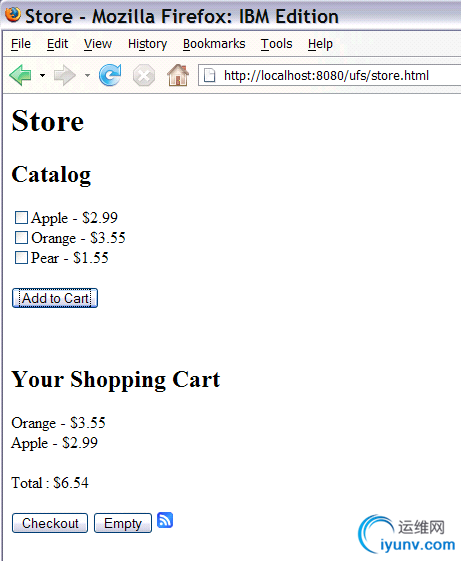
Next Launch your Web browser and enter the following address:
http://localhost:8080/store/store.html
You get to the Store user facing service of the composite service application.

You can select items from the Catalog and add them to your Shopping Cart.
Note:
When adding items for the first time you will be asked for userid and password
by the
browser. Enter "admin" for both.
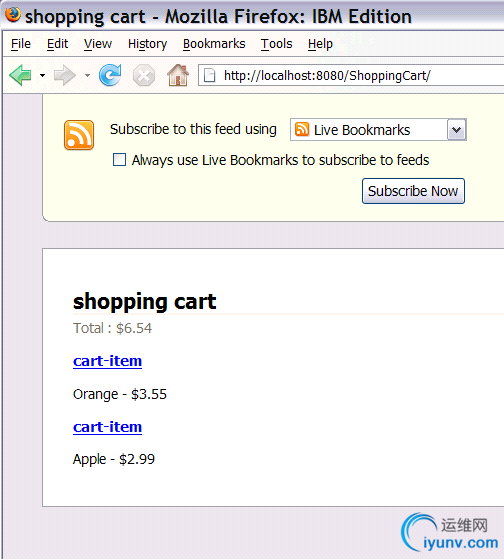
Since the ShoppingCart service is bound using the ATOM binding, you can also look at the
shopping card content in ATOM feed form by clicking on the feed icon
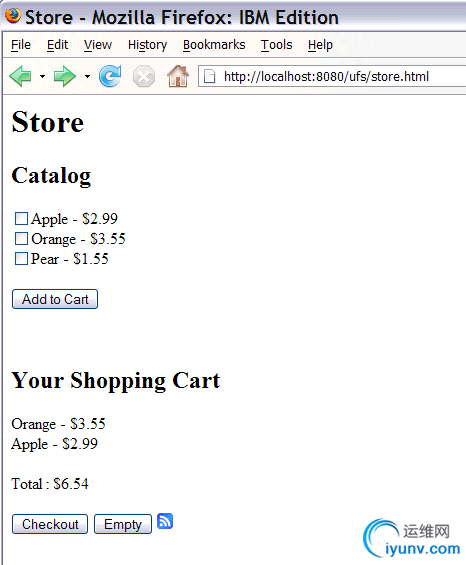
. You get the browsers default rendering for ATOM feeds.
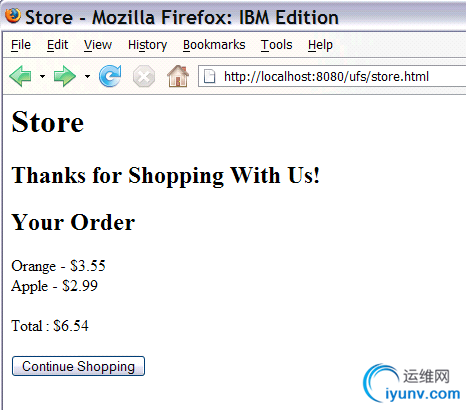
Use the browser back button to get back to the Store page.
And then you can Checkout to complete your order.
Congratulations, you have created an accessible, flexible, reusable Store application using Tuscany SCA technology.
来自官网 |
|